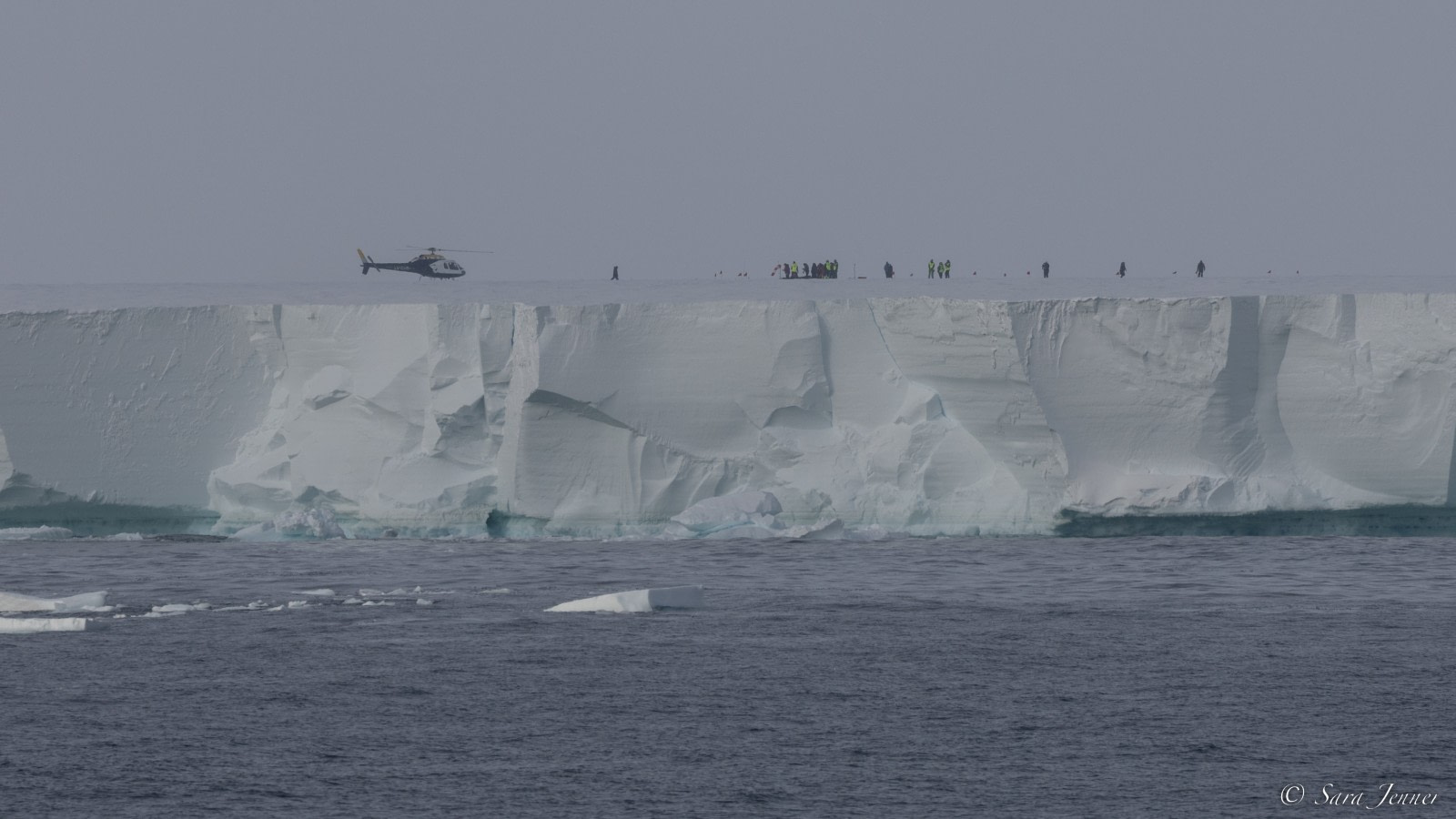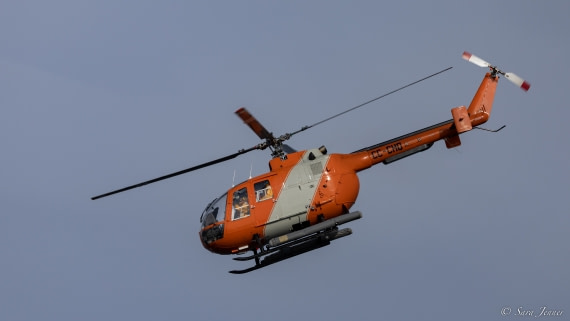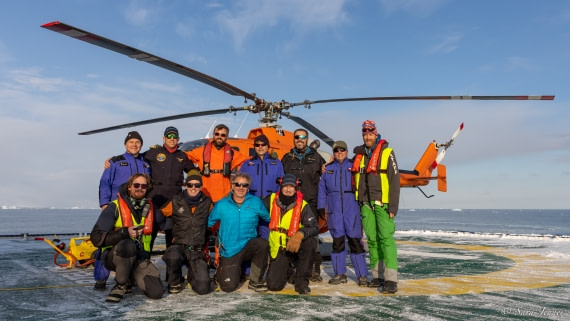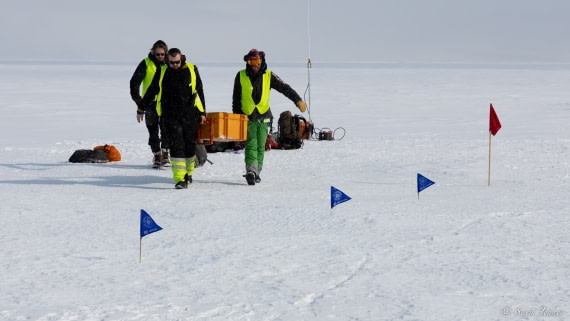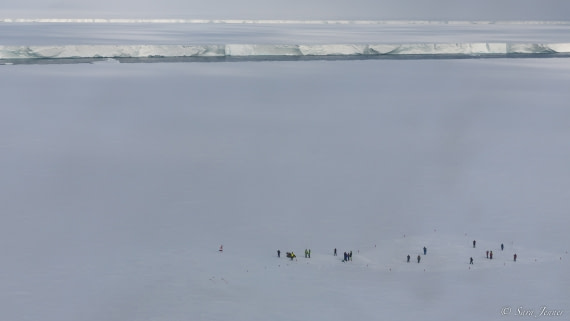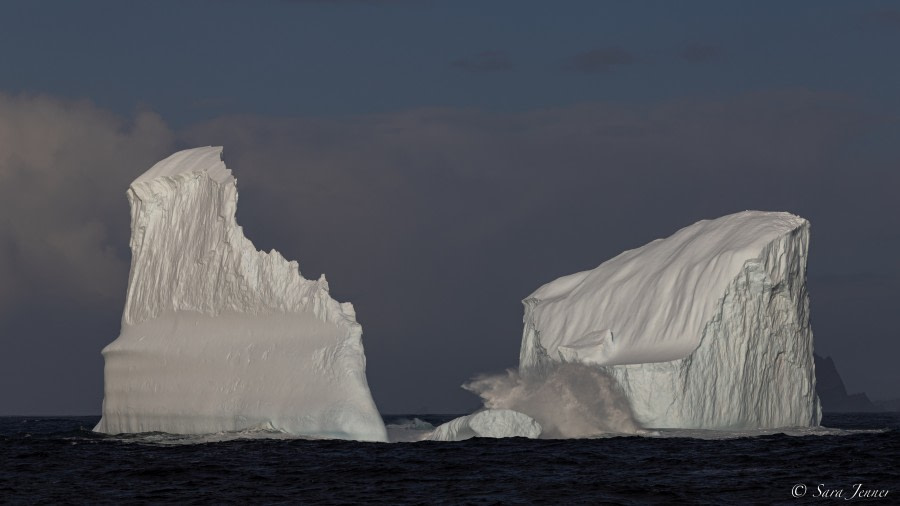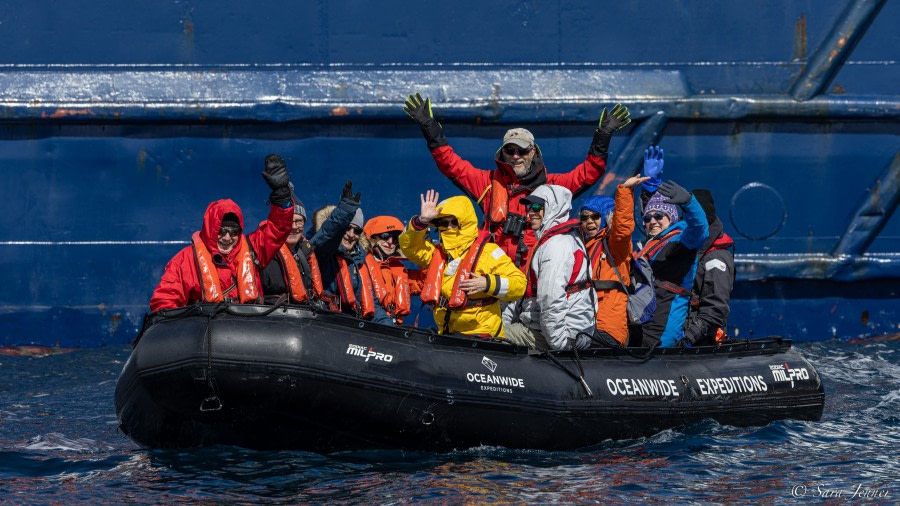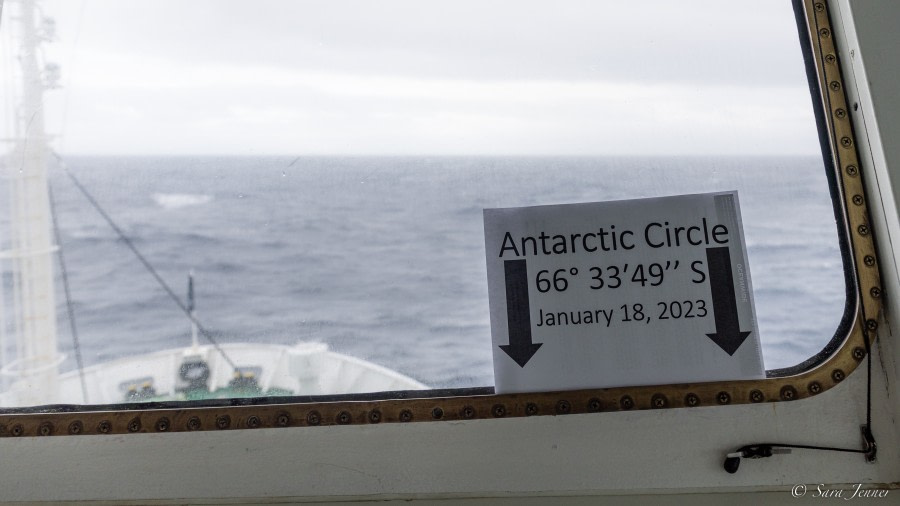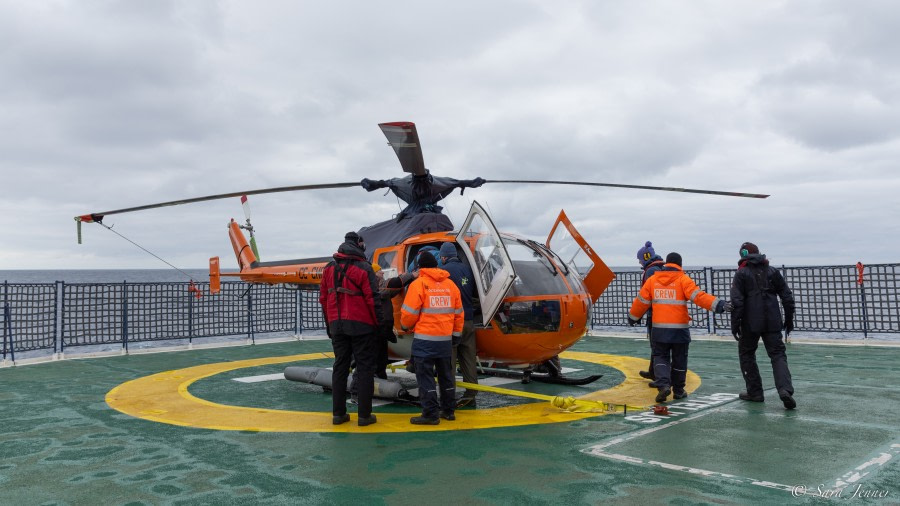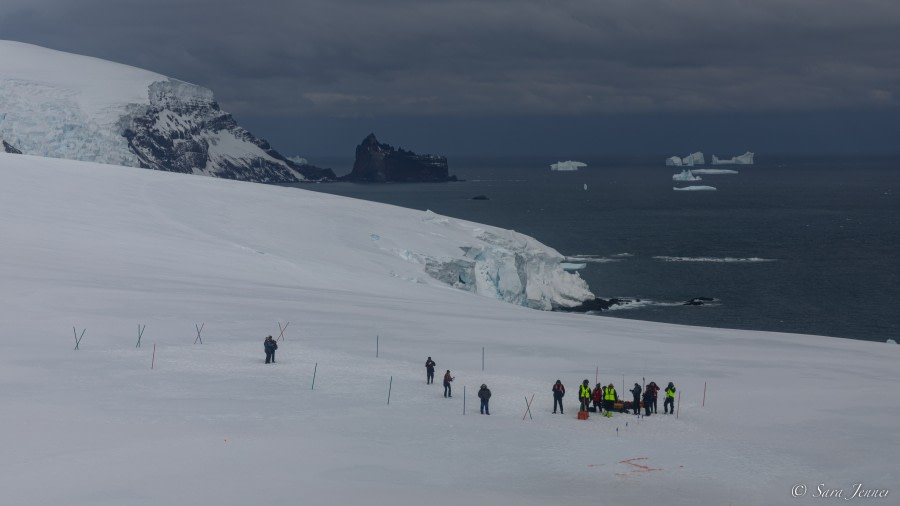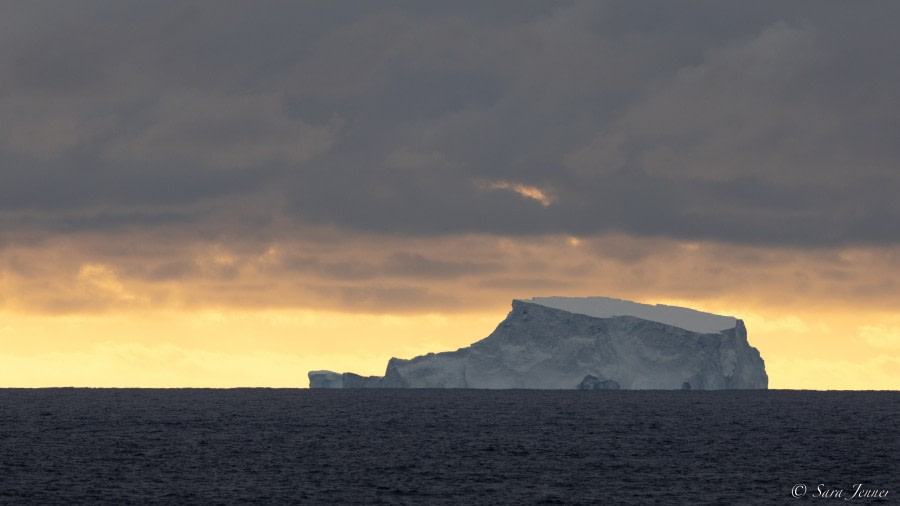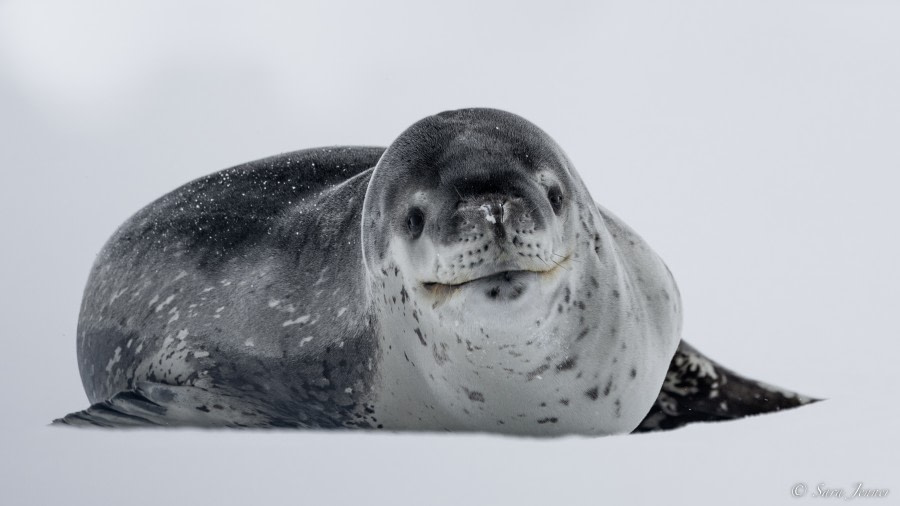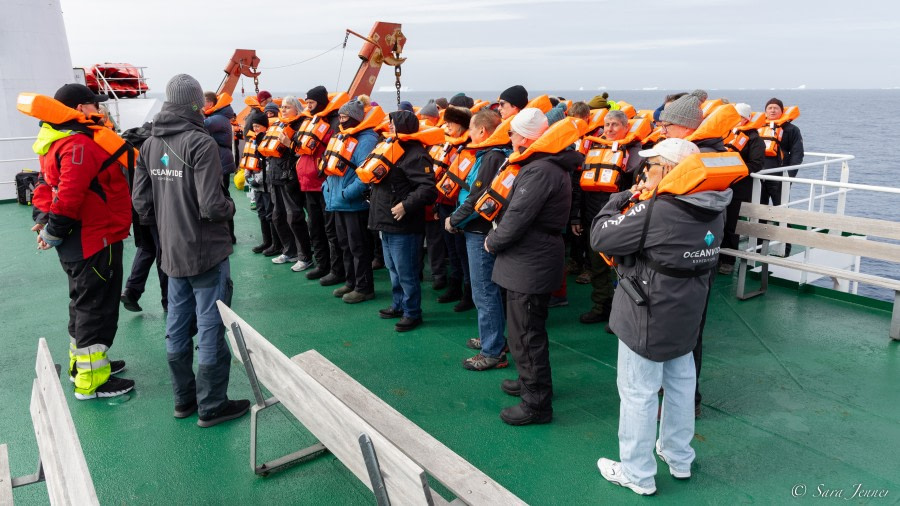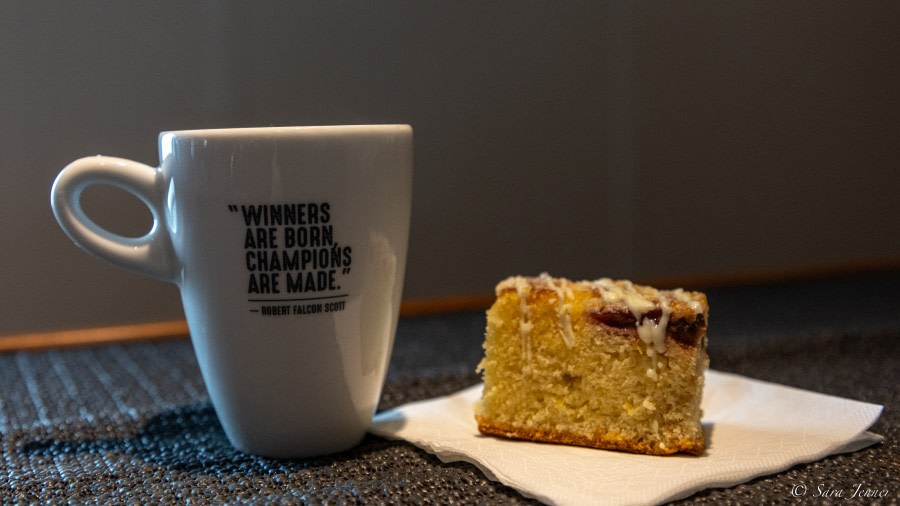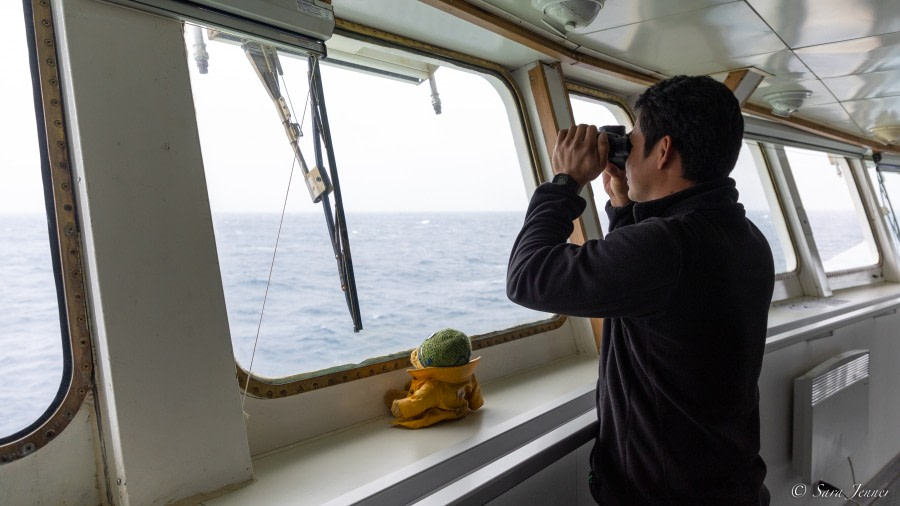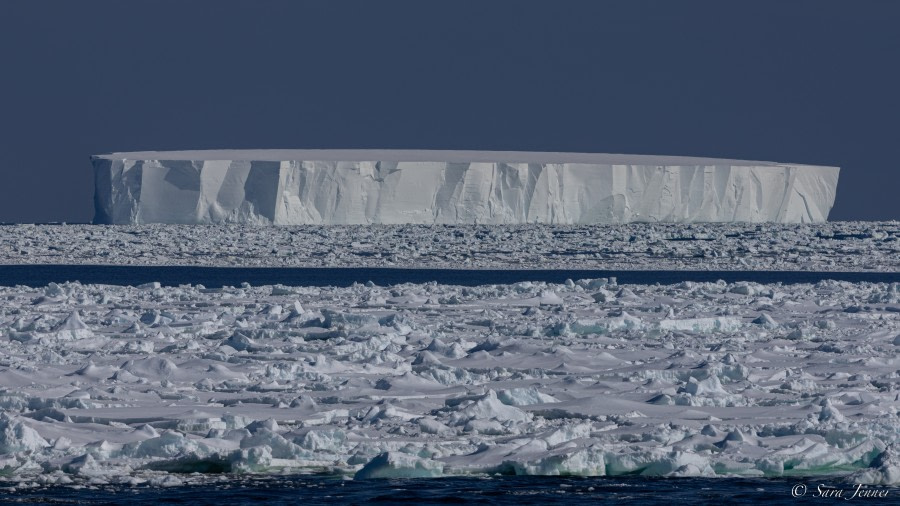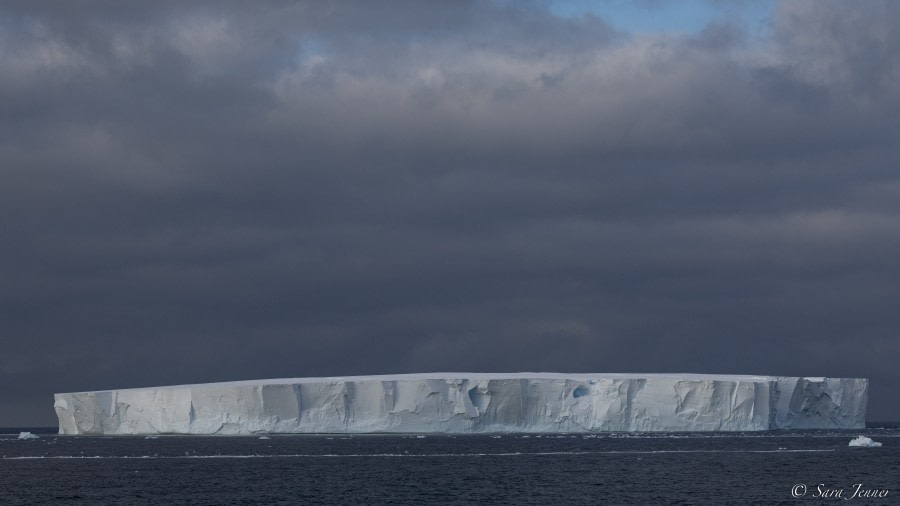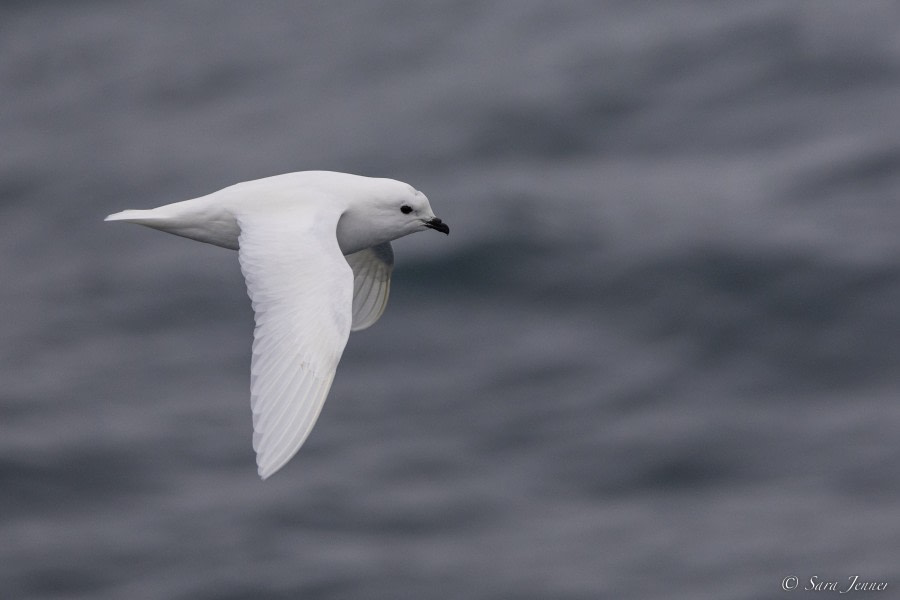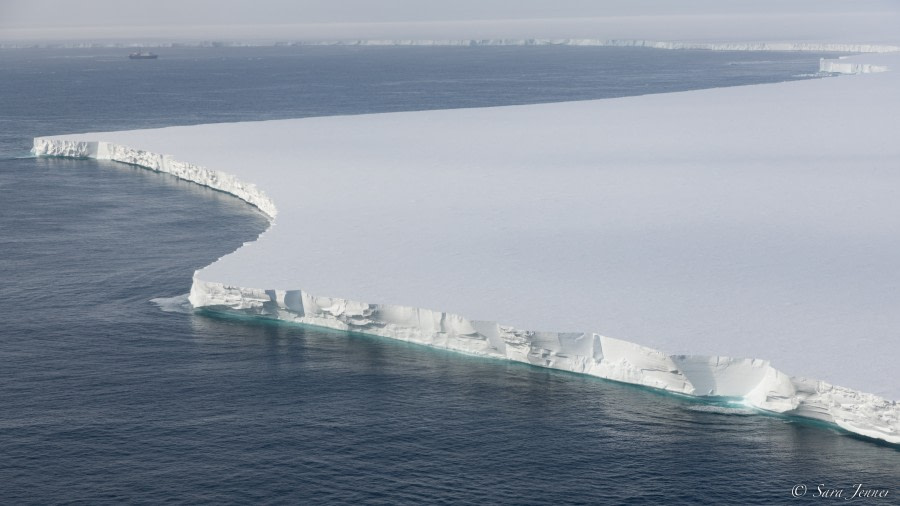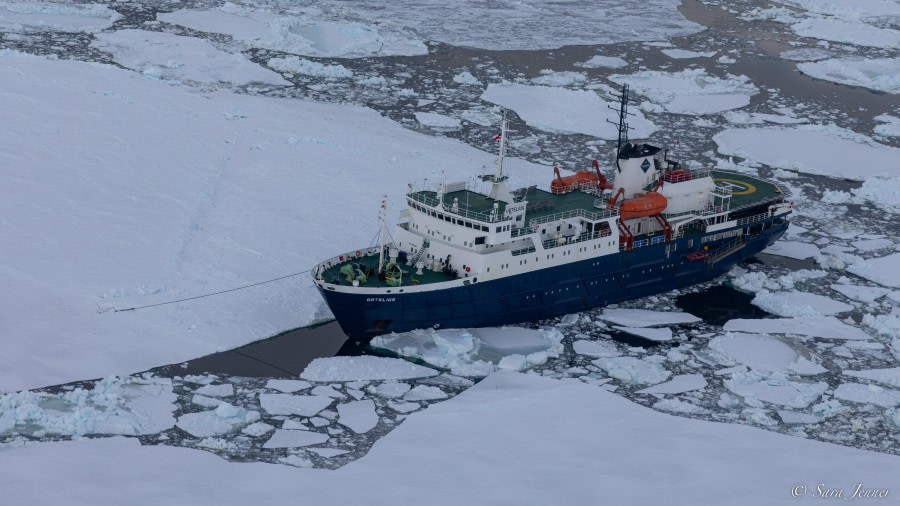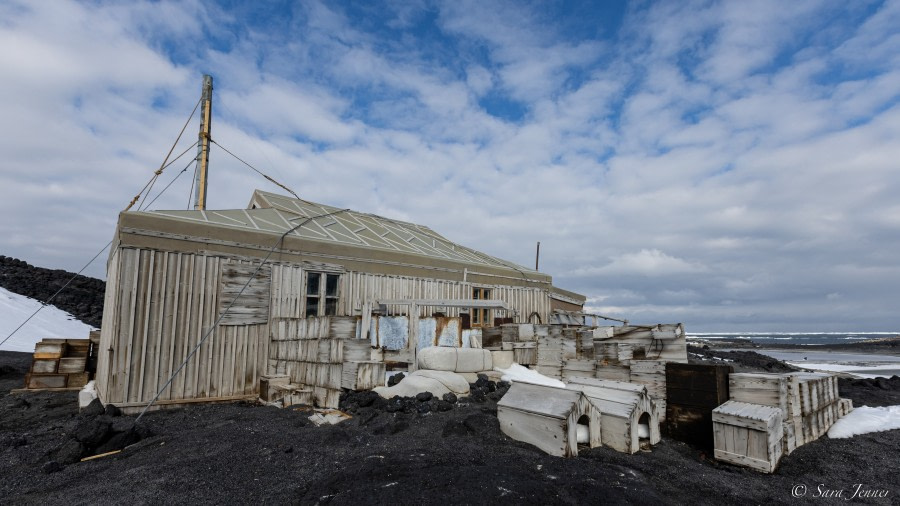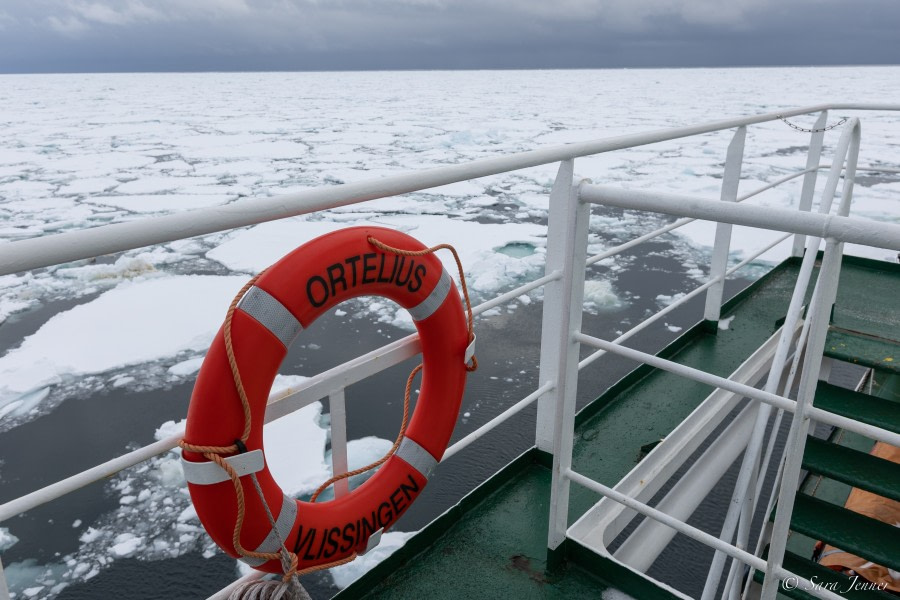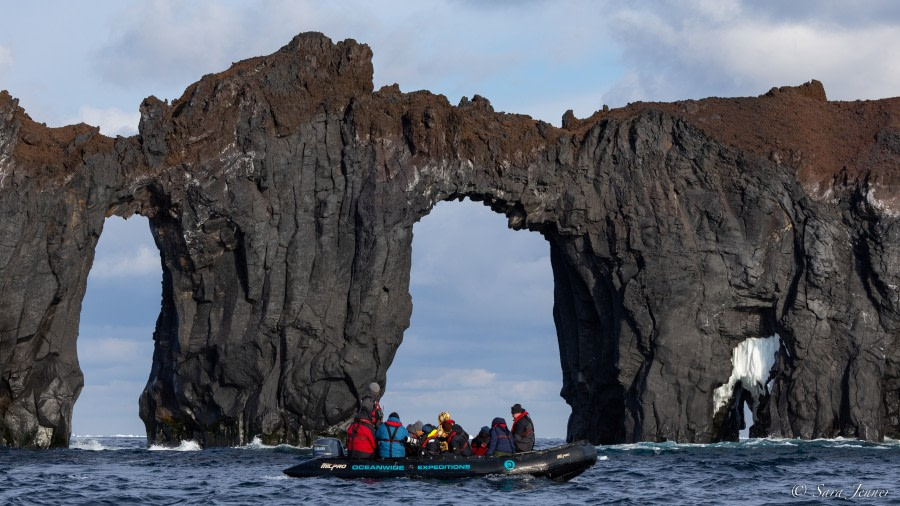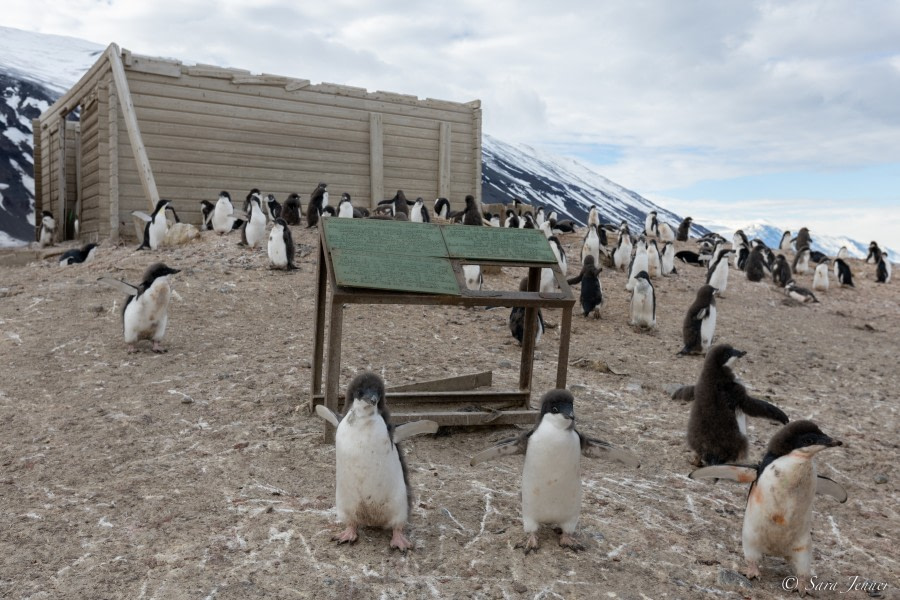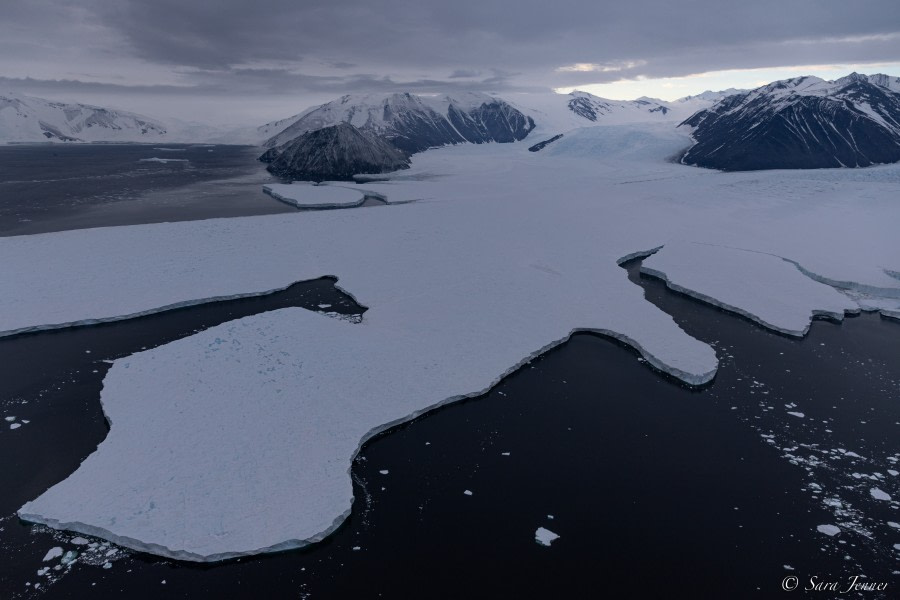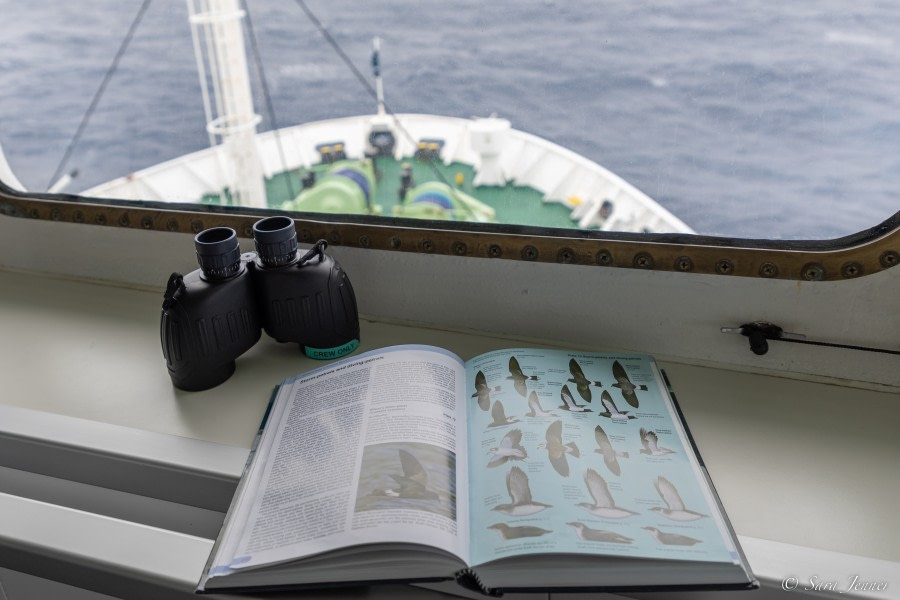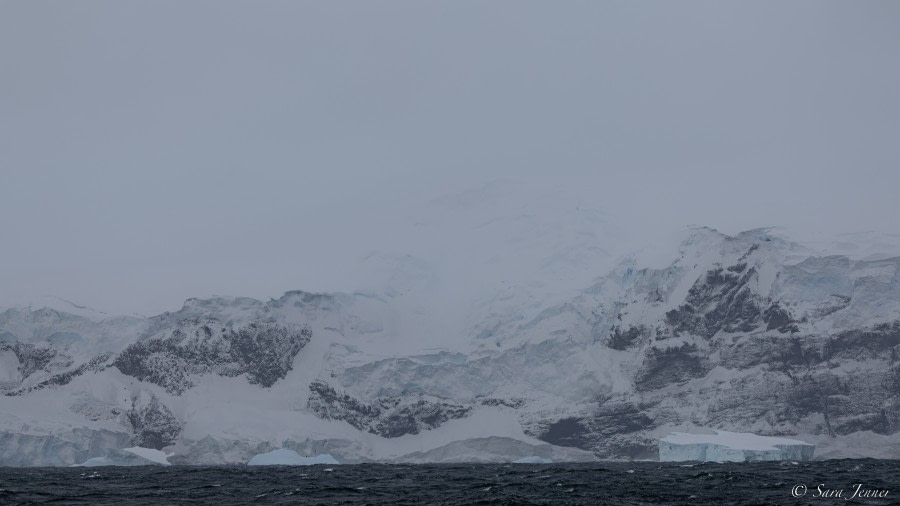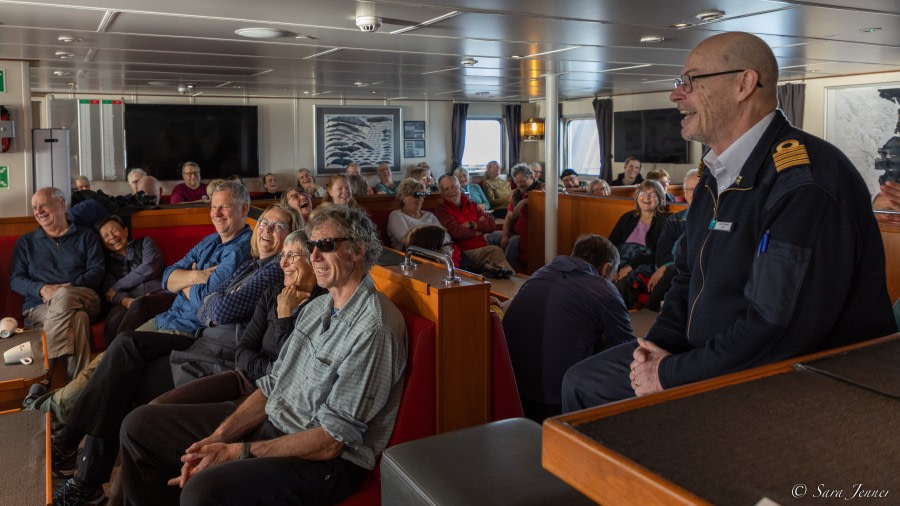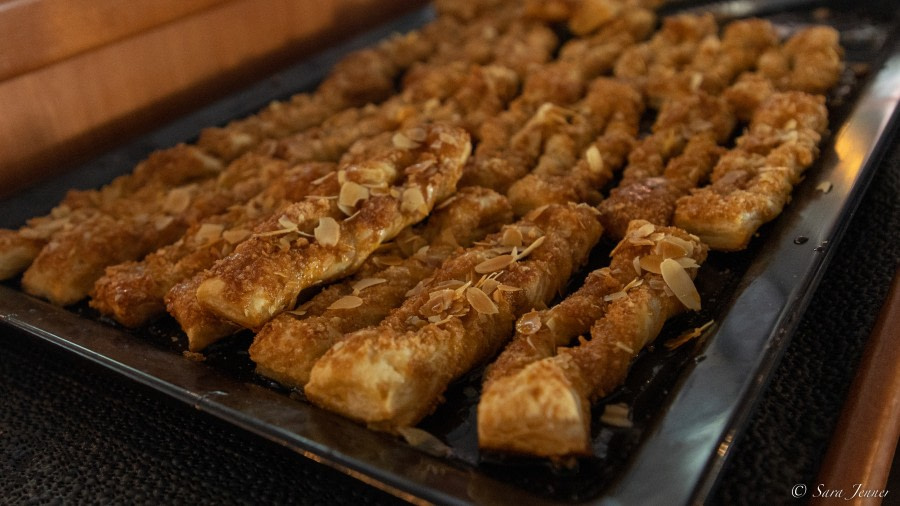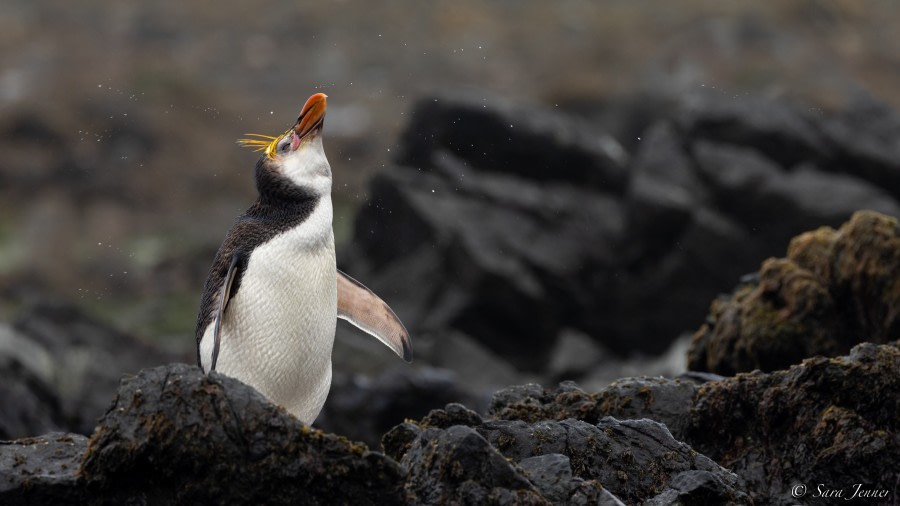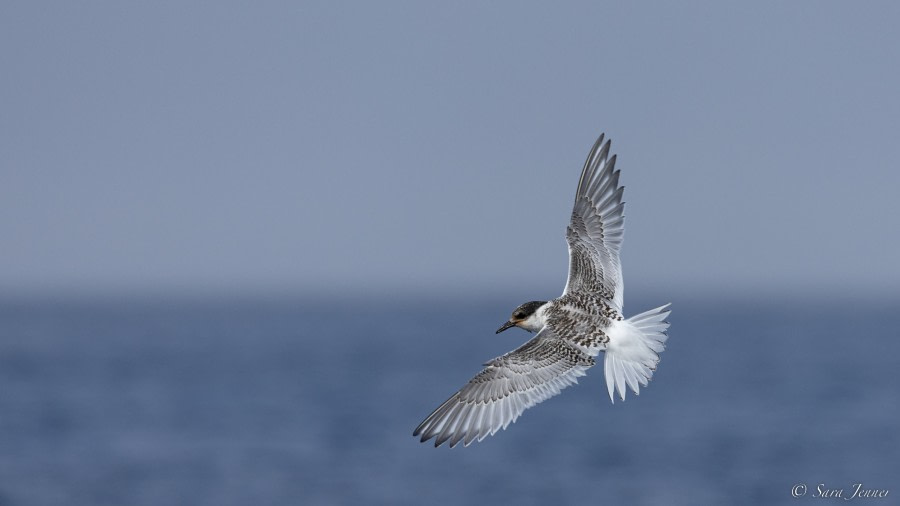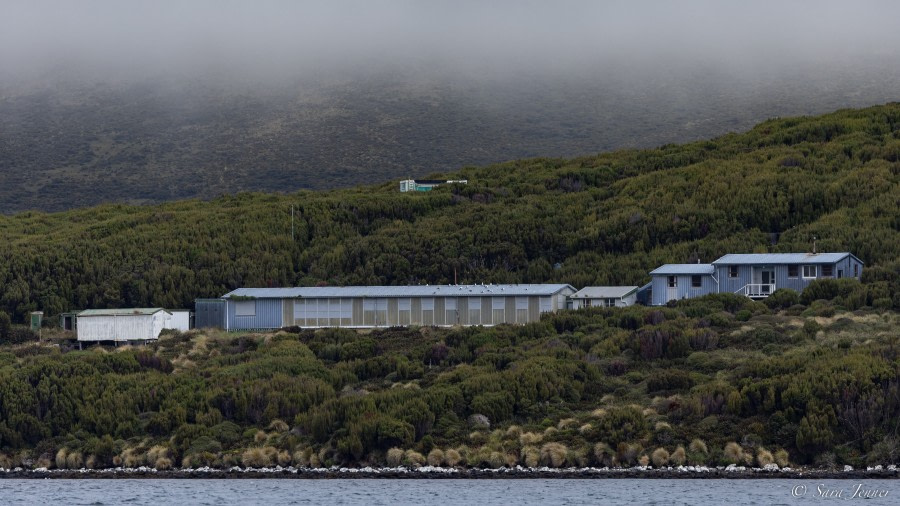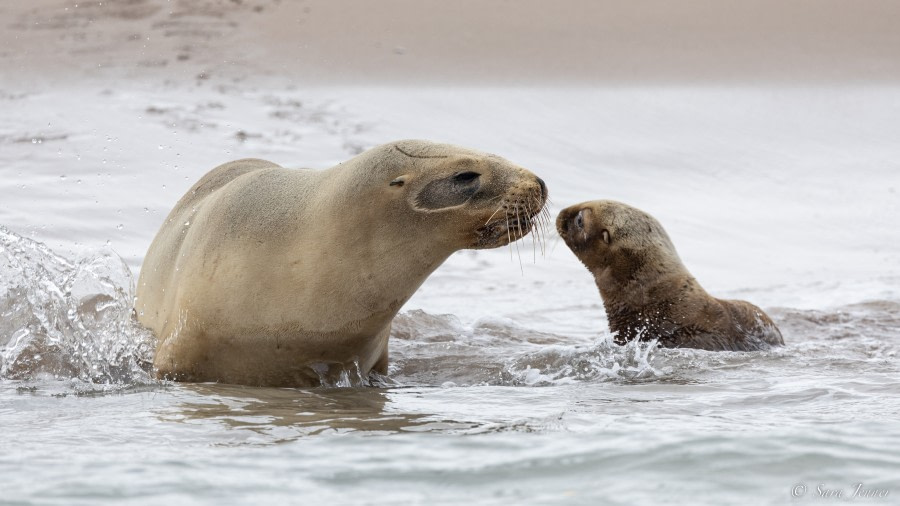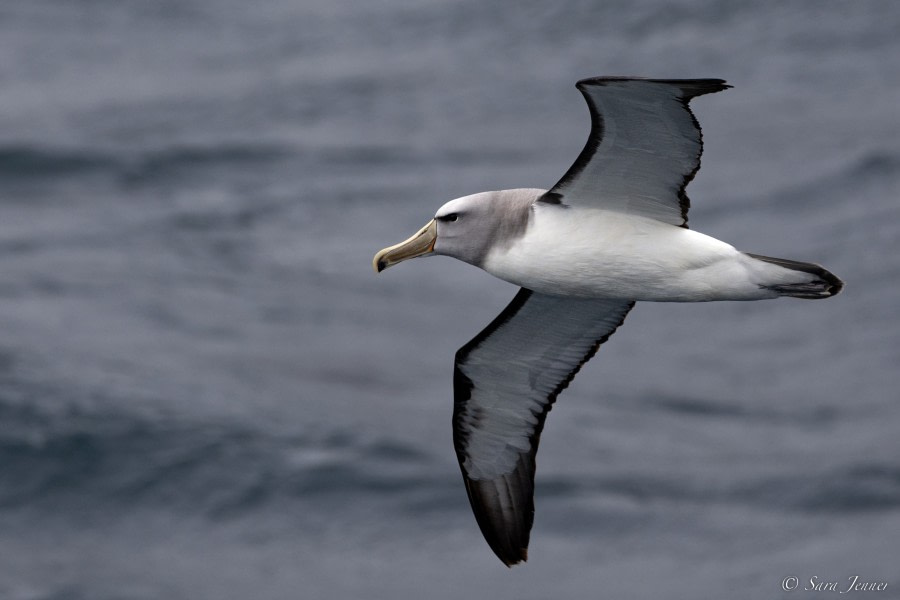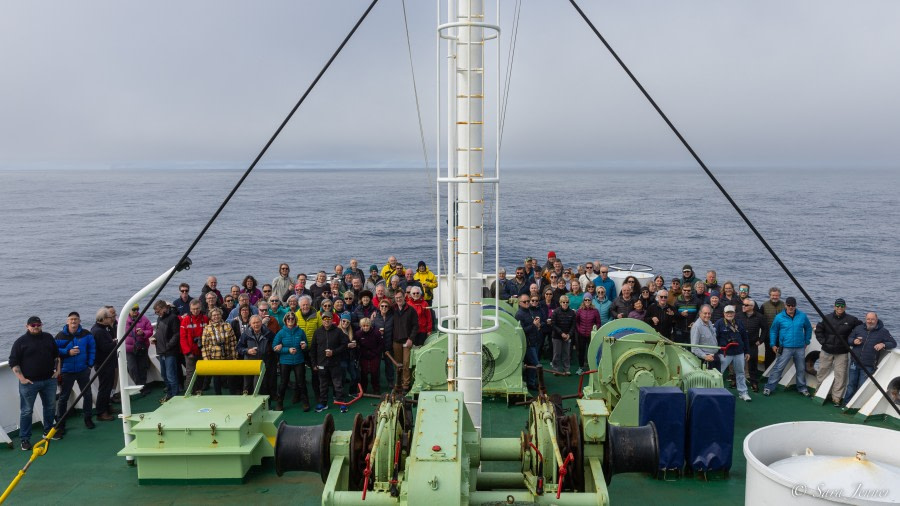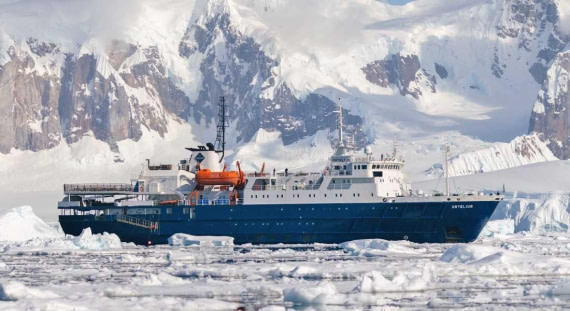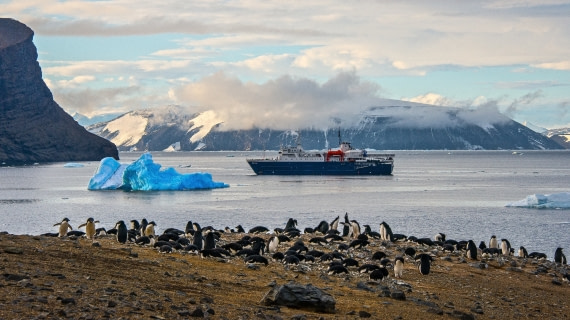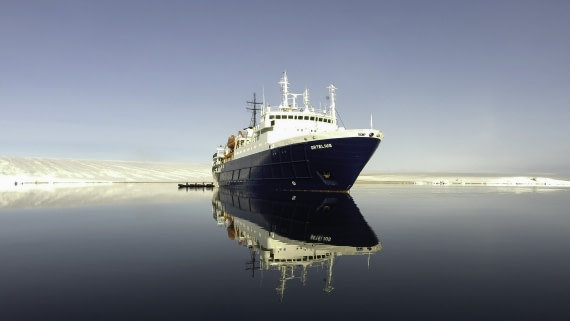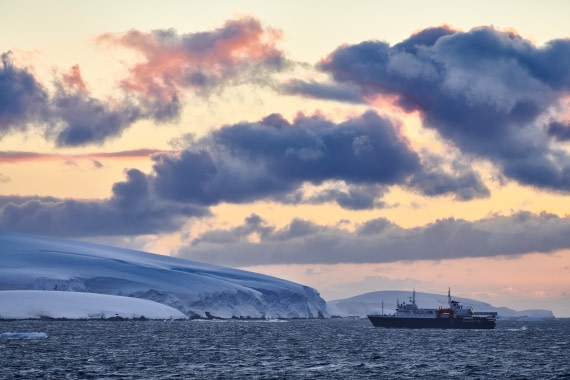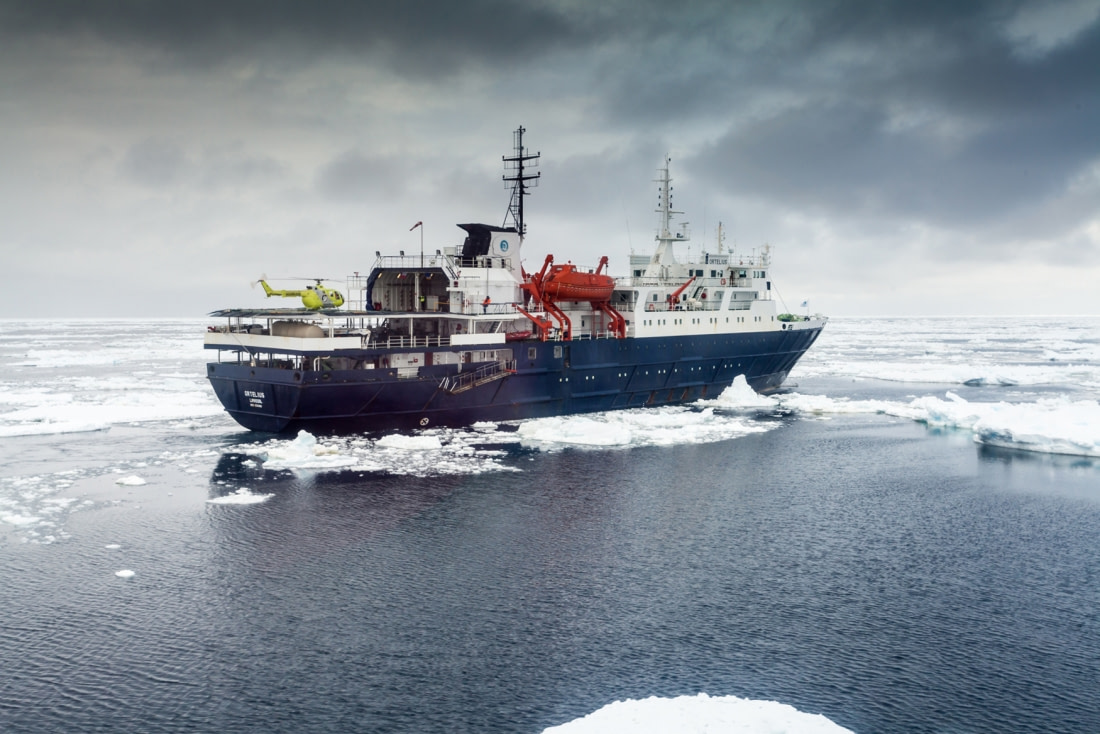| Datum: | 14.01.2023 |
| Positie: | 54°48.6’S / 68°17.8’W |
| Wind: | Var 1-2 |
| Weer: | Cloudy |
| Luchttemperatuur: | +6 |
The day had finally come: it was time to board Ortelius for our expedition trip to the Ross Sea! It was a beautiful day when we arrived at the port in Ushuaia with the sun shining and a gentle breeze of wind. The Expedition Team and Hotel Staff had helpfully brought our luggage aboard and taken it to our cabins earlier in the day, so all that remained was for us to do was head up the gangway to reception to get our cabin key. We could barely contain our excitement!
We were warmly welcomed by all the crew and staff who assisted us in finding our cabins. We had a little time to explore the ship and get our bearings prior to the mandatory ship safety briefing from expedition Leader Christian and Chief Officer Mikael. We were given all the information we needed such as moving safely around the ship, the things we could and could not do, and how to put on our emergency life jackets. It was then time for an abandon ship drill so after hearing the seven short and one long blast of the ship’s horn we went to our cabins, got our lifejackets, and went to our muster stations (either the restaurant or bar). Then we were led to our lifeboats so we would know where to go in case of a real emergency.
After this Hotel Manager Stephen gave a welcome briefing, helping to explain how life would be on the ship over the coming days.
It was then time to join Captain Mika Appel in the bar to raise a glass in celebration of the voyage ahead. Cheers everyone! Ortelius left the port and got under way, beginning our journey along the Beagle Channel. Then it was time for our first evening meal onboard, with a delicious buffet selection provided by Chef Heinz and his galley team served by our friendly dining room staff. After dinner we were given our Muck boots which we would use for going ashore later in our trip.
Following dinner we had time to head out onto the open decks to enjoy the stunning scenery and look out for wildlife. The light was amazing with sunbeams streaming through the clouds over the mountains on our Starboard side. We saw our first Black-browed Albatrosses, Magellanic Penguins, Giant Petrels, Chilean Skua and South American Terns. After a long day of travel for most of us it was then time for bed to get some rest before the first day of the infamous Drake Passage tomorrow.
